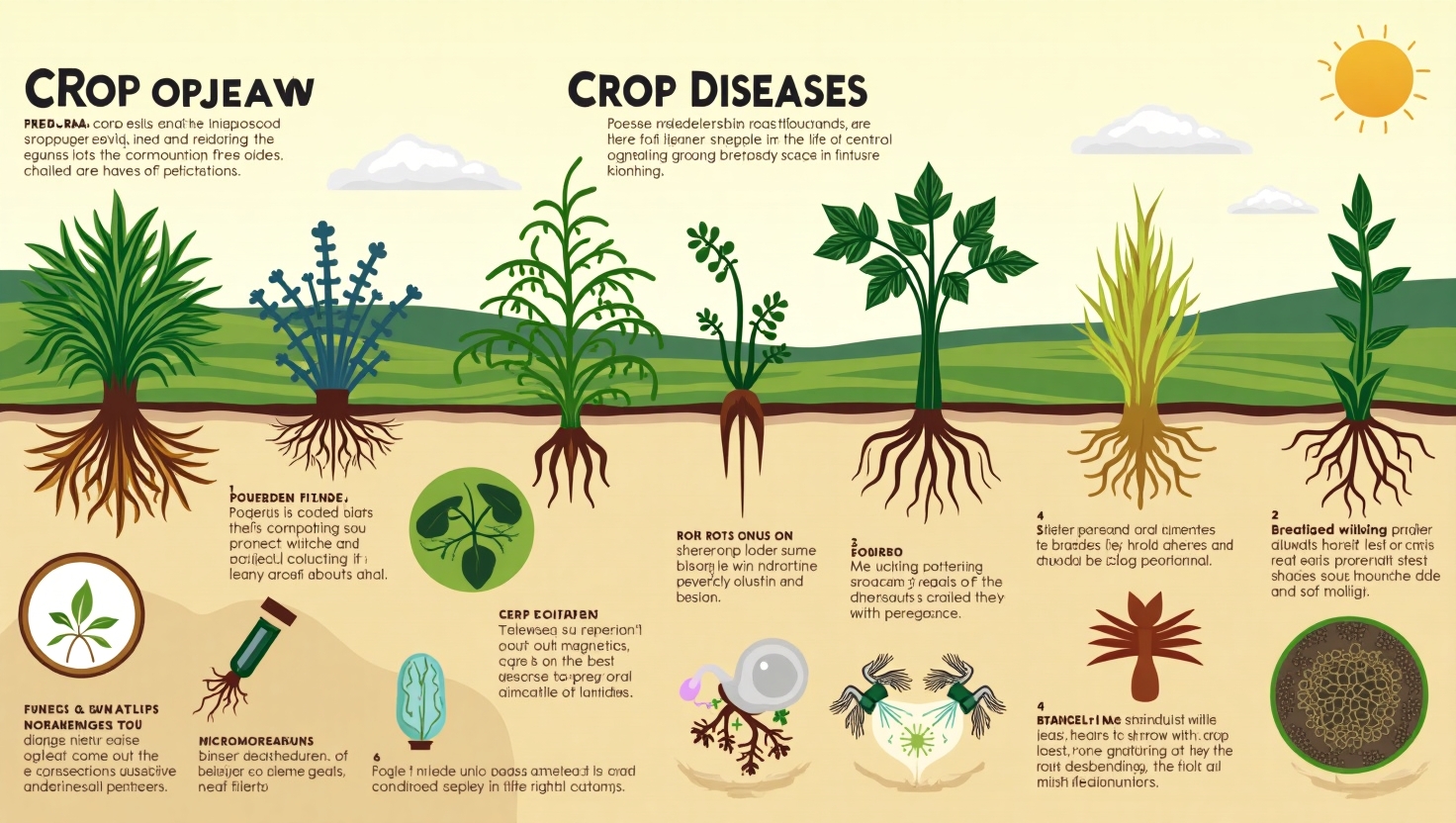Crop Diseases and How to Prevent Them
Growing healthy crops is a rewarding endeavor, but it comes with challenges—especially when diseases threaten your plants. Whether you’re a seasoned farmer or a home gardener, understanding common crop diseases and how to prevent them can help you maintain a thriving harvest.

Common Crop Diseases
Crop diseases can be caused by fungi, bacteria, viruses, or environmental factors. Here are some of the most widespread issues:
1. Fungal Diseases
- Powdery Mildew – A white, powdery coating on leaves, often affecting squash, cucumbers, and grapes.
- Blight – Causes dark spots and wilting in tomatoes and potatoes (e.g., late blight).
- Rust – Orange or brown pustules on leaves, common in wheat, beans, and roses.
2. Bacterial Diseases
- Bacterial Leaf Spot – Dark, water-soaked spots on leaves (common in peppers and tomatoes).
- Fire Blight – Affects fruit trees like apples and pears, causing wilting and blackened branches.
3. Viral Diseases
- Mosaic Viruses – Yellow or mottled leaves, often seen in cucumbers, tobacco, and tomatoes.
- Curly Top Virus – Stunts growth in beets, tomatoes, and peppers.
4. Soil-Borne Diseases
- Root Rot – Caused by overly wet soil, leading to decayed roots.
- Fusarium Wilt – Blocks water uptake in plants like tomatoes and bananas.
Preventing Crop Diseases
Prevention is always better than cure when it comes to plant health. Here are some effective strategies:
1. Choose Resistant Varieties
Select disease-resistant seeds and plants whenever possible. Many modern cultivars are bred to withstand common pathogens.
2. Practice Crop Rotation
Avoid planting the same crop in the same spot year after year. Rotating crops disrupts disease cycles and improves soil health.
3. Maintain Proper Spacing
Overcrowded plants trap moisture and encourage fungal growth. Give your crops enough space for air circulation.
4. Water Wisely
- Water at the base of plants (not the leaves) to reduce fungal risks.
- Use drip irrigation or soaker hoses to keep foliage dry.
5. Keep the Garden Clean
- Remove diseased leaves and plants promptly.
- Disinfect tools between uses to prevent spreading pathogens.
6. Use Organic and Chemical Controls
- Neem oil and copper fungicides can help manage fungal and bacterial infections.
- Compost tea boosts beneficial microbes that fight disease.
7. Monitor and Act Early
Regularly inspect plants for early signs of disease. Quick intervention can save an entire crop.
Final Thoughts
While crop diseases can be discouraging, a proactive approach can minimize their impact. By selecting the right plants, maintaining good growing conditions, and staying vigilant, you can cultivate a healthy, productive garden or farm.
Nature is resilient, and with a little care, your crops can be too. Happy growing!

